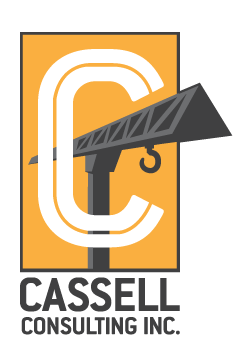Most of our work lately has been P6 training, and I find myself during that training to be referring often to Generally-Accepted-Scheduling-Practices. However, I don’t know if a written set of such practices exists – yet. So the purpose of this blog is an attempt to do just that, condensing my 30 years of construction scheduling experience into a list of Best Practices, which can be abbreviated to the curious acronym, “GASP”.
- First and foremost, always maintain professional ethics in preparing the schedule. There are ways to manipulate scheduling software to achieve questionable results, but avoid doing so. Take the high road and act in the best interests of the project.
- Make sure you build a closed logical network that passes this simple test:
- Every activity but the first has a predecessor.
- Every activity but the last has a successor.
- Use Constraints sparingly, typically only for contract provisions such as project start, project finish, and turnover dates that are contractually required.
- Use “softer” constraints such as “Finish On or Before” more often than “Mandatory Finish” for example. This allows dates to move according to the logical network, calculating positive float if early, negative float if late.\
- The WBS (Work Breakdown Structure) should be built based on the primary organizational criteria of the project- the project’s “big rocks.”
- The first WBS should consist of the Project’s Milestones.
- The next WBS should be for Preconstruction activities.
- WBS levels in between should describe the Construction phase.
- The last WBS should be project turnover & closeout.
- Each WBS code can include hierarchical sub categories, (Levels 3 & 4 WBS), organizing the project into more detailed WBS branches.
- Use Activity Codes for secondary breakdowns such as Responsibility, CSI, and job areas & locations. Assign to all Activities as applicable.
- Guidelines for Activities:
- Activities should do one type of work only, and have continuous, uninterrupted duration. (“Drywall” is not an activity, it’s really at least three: “Hang drywall at walls”, Tape & finish drywall at walls”, “Paint walls” are better activities.
- To make it easier to update progress accurately:
- Assign construction Activities a maximum duration of one month (20 working days for 5-day week. This doesn’t apply to Precon & Procurement Activities.)
- Break down activities by location and add location info into Activities’ description.
- Make Activity Descriptions unique. Don’t rely on WBS to differentiate as when the schedule is grouped differently, identical descriptions are confusing.
- Don’t use Lag when an Activity can describe the situation.
- Always review Schedule Log report and fix any errors before submitting a schedule.
- Don’t change Activity ID #’s once the Baseline has been approved. Delete (or dissolve) Activities only with approval by the other Contractual Partner.
- Each project should have one and only one schedule.
- Use incremental Baselines rather than multiple copies of the schedule to save monthly updates and pay applications. P6 allows an unlimited number of 0Baselines to be saved to the project schedule.
This keeps the database clean and eliminates the chance of opening the wrong
- Use incremental Baselines rather than multiple copies of the schedule to save monthly updates and pay applications. P6 allows an unlimited number of 0Baselines to be saved to the project schedule.
Happy Scheduling !




